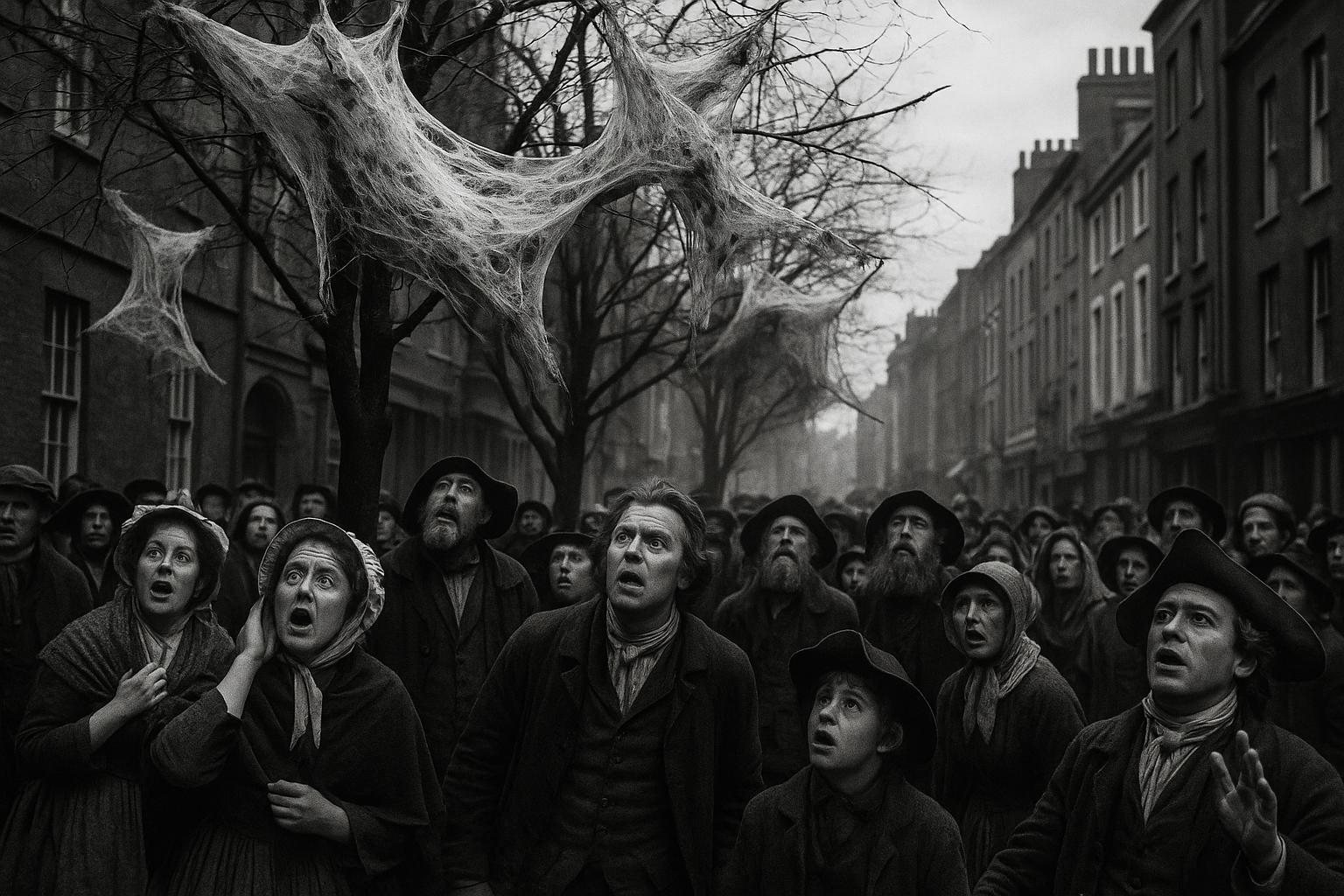London in the early 1780s was a city rife with turmoil. The decade commenced with the Gordon Riots—anti-Catholic uprisings that left destruction in their wake, claiming countless lives and scarred sections of the metropolis. This period of unrest unfolded against the backdrop of the American Revolution, which diverted political and public attention across the Atlantic. Just 18 months later, in the spring of 1782, an unexpected new concern emerged that further unsettled the city: an invasion of brown-tail moth caterpillars.
These little creatures transformed the city and countryside alike, blanketing foliage with extensive nests that fed on local plants. While caterpillars are a natural part of the ecosystem, their emergence came to be seen by the anxious populace as an ominous sign, evoking fears of plague and famine. The anxiety surrounding this infestation reveals much about life in late 18th-century Britain, illustrating the disparities in education and literacy among the general public. As was often the case in such historical events, competing narratives emerged: on one side were the scientifically literate who sought to downplay the dangers, while on the other were those with dubious credentials stirring public panic.
This peculiar incident was vividly chronicled by Johan Lidwell-Durnin, a historian at the University of Exeter. His recent study highlights not just the caterpillar outbreak itself but also the societal dynamics that influenced public perception. The caterpillars, while largely harmless pests, caused substantial alarm as they coincided with an influenza outbreak that many believed was exacerbated by their presence. Public discourse often linked the two events, with sensationalist reports fuelling widespread panic. Newspapers described the caterpillars as disease carriers, and alarm surged that spring, compounded by rising cases of nausea and skin irritations after contact with the caterpillars' irritant hairs.
In this environment of fear, the figure of Gustavus Katterfelto emerged. A Prussian showman and self-proclaimed natural philosopher, Katterfelto exploited the public's trepidation, promoting his own sensational narratives. He had made a name for himself by merging magic performances with pseudo-scientific lectures, dazzling audiences with rudimentary scientific apparatus and projections of microorganisms that he asserted caused the outbreak of influenza. His tactics included public demonstrations where he presented enlarged images of these microorganisms, alleging that the caterpillars heralded plague and famine, thereby offering dubious remedies and tonics.
Katterfelto's character is emblematic of the era’s chaotic relationship with science. His blend of entertainment and quackery put him at the centre of the public discourse surrounding the caterpillar invasion. Historical accounts underscore how the boundaries between legitimate science and charlatanism were blurred, with respected figures like Jonas Hanway and William Curtis striving to counteract the hysteria with reasoned explanations. They produced pamphlets to inform the public about the caterpillars and their actual, mostly benign role in the environment.
Ultimately, the grim predictions surrounding the caterpillars failed to materialise. As Katterfelto’s fears proved unfounded, he became a figure of ridicule in popular satire. Yet, the fact that some in the public continued to interpret the caterpillar episode as an omen reflects a time when natural phenomena were often viewed as signals of wider societal conditions. Lidwell-Durnin captures this sentiment, noting that for the public of 1782, the truly alarming aspect of the caterpillars lay less in the threat they posed and more in what their sudden appearance might signify about the world beyond—the frightening and often inexplicable forces at play in their lives.
The story of this caterpillar outbreak serves as a lens through which we can examine not only the societal anxieties of the time but also the evolving nature of scientific understanding. The moment illustrates the often dissonant path between emerging scientific inquiry and entrenched superstitions, a duality that continues to resonate in various forms today.
📌 Reference Map:
- Paragraph 1 – [1], [2]
- Paragraph 2 – [1], [3], [4]
- Paragraph 3 – [2], [5], [6]
- Paragraph 4 – [1], [4]
- Paragraph 5 – [2], [3], [6]
- Paragraph 6 – [1], [2], [5]
Source: Noah Wire Services
